Curiosities and Challenges about Geography
Do you like Geography?
Would you like to see more curiosities like these..
The natural landscape corresponds to the natural elements of the space, that is, which have not been modified by human....
The humanized landscape is the result of human interference in nature. In it, nature can be absent or modified. These..
Planet Earth is made up of six major continents: America, Africa, Europe, Asia, Oceania and Antarctica. These extensive....
So.. How about a Challenge on the Best Quiz Platform in the World?
Every scene is an opportunity to shine
Get to know a little about everything and bet on your knowledge in incredible challenges and duels..
Join the betspot.zone community, accumulate bts (bets) and even compete for prizes..
Discover some interesting facts about Geography..
earth Quiz - earth Curiosities - earth Challenge - academic Quiz - academic Curiosities - academic Challenge - maps Quiz - maps Curiosities - maps Challenge - school Quiz - school Curiosities - school Challenge - planet Quiz - planet Curiosities - planet Challenge - - Frequently asked questions about Geography
International Asteroid
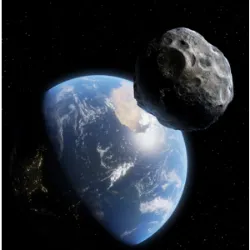
International Asteroid Day is celebrated on June 30th . This day aims to raise awareness about asteroids and highlight the importance of researching and monitoring these celestial bodies. Asteroids are rocky pieces that orbit the Sun, and knowledge about them is crucial to better understand the solar system and to develop planetary defense strategies against possible asteroid impacts on Earth. This day also aims to promote international cooperation in the observation and study of asteroids, aiming to protect our planet from potential cosmic threats.
celebrate in June 30
publicity
Geography is a very old science, and was born in Greece

Geography is a very old science, and was born in Greece, at first it was limited to describing the Earth's surface known at the time. Geography = Geo (Earth) + spelling (description) Currently, and taking into account the complexity of the aspects that can be observed on the earth's surface, Geography is not limited to describing but also interpreting existing phenomena, as well as the relationships that are established, in order to find solutions to existing problems. In short, Geography is the science dedicated to the study of physical and human phenomena that occur on the Earth's surface and the interrelationships that they establish.
Capturing the earth's surface and its elements on a map or g

Capturing the earth's surface and its elements on a map or globe requires a reduction of reality. This reduction is expressed by the scale. Both numeric scales (represented by fractions) and graphic scales convey the same information to the user. However, the graphical scale has an advantage in representing the distance on the map by means of a line segment, allowing enlargements or reductions of the map to preserve the proportion between the distances on the map and in reality.
Cartography deals with the challenge of representing the sha
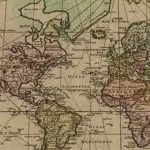
Cartography deals with the challenge of representing the shape of the Earth on a plane through cartographic projections. However, all projections result in distortions in the contours, distances and proportions of continents and oceans. There is the Cylindrical Projection - which uses a cylinder as a projection surface, and is ideal for building planispheres; Conical projection - uses a cone as a projection surface, and is ideal for mapping mid-latitude regions; and Azimuthal projection - uses a plane as a projection surface, and is ideal for building maps of polar regions.
publicity
Human beings have always sought to understand the space arou

Human beings have always sought to understand the space around them, representing it on globes and maps, fundamental tools for Geography. These representations help in locating, identifying relationships between phenomena and detecting patterns. Different types of maps allow portraying various natural and human phenomena with different levels of detail and perspective. Among them are the plan, the itinerary map, the topographic map and the planisphere.
In 1972

In 1972, UNESCO adopted the Convention for the Protection of the World Cultural and Natural Heritage with the purpose of identifying, preserving and conserving landscapes of great value to humanity. These landscapes, whether natural or humanized, contribute to human knowledge and history or face extinction risks. Since then, global efforts have been directed towards protecting and conserving World Heritage Sites such as the Memphis Necropolis and the pyramids from Giza to Dahshur in Egypt, the Giant Panda Sanctuary in China and Machu Picchu in Peru, the Subantarctic Islands New Zealanders in New Zealand, among others.
Geography is a discipline whose focus

Geography is a discipline whose focus is to understand and locate the phenomena that surround human beings. It seeks to identify and evaluate the implications of human actions on the environment, while seeking solutions to promote a more harmonious coexistence between humanity and Nature. The geographer has several sources of information, such as maps, statistics, texts, photographs, films, documentaries, interviews and questionnaires. In addition, you can choose to conduct investigations in loco, as is common in field trips. Geographical investigation begins with direct observation, involving on-site analysis, and indirect observation, when the geographer examines documental sources of information.
publicity
One of the superclusters of galaxies existing in the Univers

One of the superclusters of galaxies existing in the Universe is known as the Virgo Supercluster. Within this supercluster is inserted a galactic set called the Local Group, which includes our own galaxy, the Milky Way. This spiral galaxy, composed of about one hundred billion stars, gases and dust particles, has in one of its arms the Orion Arm, where our Sun and the entire Solar System are located. The Earth, being the third planet from the Sun in the Solar System, is part of this context.
Different sizes and shapes

Different sizes and shapes are found among galaxies: among them, spiral, elliptical and irregular. Spiral galaxies stand out for their luminous central core, from which several arms emanate. Irregular galaxies, on the other hand, do not adopt defined shapes and are composed of young stars rich in gases and dust particles. As for quasars, they represent intensely luminous cores of galaxies located at great distances. These structures were identified in the 1960s. Initially observed with optical telescopes, these objects resembled stars, giving rise to the name "quasars". On the other hand, clusters of galaxies, in turn, unite to constitute sets of even larger proportions, known as superclusters or superclusters of galaxies.
Stars

Stars, planetary systems and star clusters are integrated into vast structures known as galaxies. Galaxies are conglomerates composed of countless millions of stars, plus non-stellar celestial objects, gases and dust particles, all moving collectively around their central regions. Within galaxies, gas and dust gather to form nebulae, which can either arise from the remnants of the stellar life cycle or be associated with the birth of new stars.
publicity
A star does not appear in isolation

A star does not appear in isolation, but together with many others, which, over time, tend to disperse. In this way, stars can manifest individually or in clusters. Clusters of stars with a common origin, which revolve around a central point, are called stellar clusters, and can be classified into two categories: globular (or compact) clusters, which gather older stars and range from a few thousand to a million of stars; and open clusters, which are smaller and encompass a few tens to thousands of stars. The stars in these open clusters are younger, more sparsely distributed and, over time, tend to move away from each other.
Stars that have planets and other non-stellar bodies orbitin

Stars that have planets and other non-stellar bodies orbiting around them form structures known as planetary systems. Our planet Earth is part of a planetary system called the solar system. For many centuries, the Solar System was believed to be the only planetary system in the Universe. However, we are currently aware that this assumption is not valid. Today, thousands of planetary systems, composed of planets that surround distant stars, have been identified.
The bodies we call stars have their own light

The bodies we call stars have their own light, radiating the light they generate and thus illuminating the firmament. Consequently, they are categorized as luminous celestial bodies. Such stars can also host planets and other objects devoid of their own light that orbit around them.
publicity
The celestial bodies that we identify as planets orbit aroun

The celestial bodies that we identify as planets orbit around stars, just as the Earth circles the Sun. They do not emit light of their own, making visible only the portion that is illuminated by the stars. As a result, they are categorized as illuminated celestial bodies. In addition, they may have natural satellites, which are celestial bodies devoid of their own light and that orbit around them, as is the case of the moon, which orbits around the Earth.
The Universe

The Universe is composed of celestial bodies and vast spaces where the presence of matter is scarce. These various celestial bodies are arranged in structures that expand in successively increasing scale. In the Universe, we can observe stars of different ages: some are still in the process of formation, others are in stable stages of life and some are in the final stages of their existence. The Sun is currently in a stable life phase.
The natural landscape corresponds to the natural elements of

The natural landscape corresponds to the natural elements of the space, that is, which have not been modified by human action or which are not directly related to it. We can consider as examples of natural landscape the space of a forest, the area of a desert or even the area of a volcano. Everything that is not related to the naturalness of the environment ceases to characterize the natural landscape.
publicity
The humanized landscape

The humanized landscape is the result of human interference in nature. In it, nature can be absent or modified. These modifications may be the result of actions ranging from the construction of buildings to the destruction of habitats. humanized landscapes can also be called urban or cultural landscapes.
Planet Earth is made up of six major continents: America

Planet Earth is made up of six major continents: America, Africa, Europe, Asia, Oceania and Antarctica. These extensive portions of land are bathed by seas and oceans, including the continental shelf that extends into oceanic waters. Africa is located in the East, with part of its countries in the Southern Hemisphere, being the third largest continent in the world. On the other hand, America is the second largest continent and is all in the western region of the Earth. Asia, located in the Eastern Hemisphere and with most of its territory in the north, is the largest continent, both in terms of land area and population. Europe has 50 countries and is the second smallest continent. Oceania is in the Southern Western Hemisphere and is the smallest of all, yet the continent with the smallest population. Finally, Antarctica is a continent without inhabitants, located at the South Pole.
The Moon is the only natural satellite of the Earth

The Moon is the only natural satellite of the Earth, formed practically together with it and with the emergence of the Universe. It received the name Luna, from Latin, as it was the only known moon at the time. Only in 1610, when Galileo Galilei discovered other moons in the solar system, was the existence of others confirmed. Due to its thin atmosphere, the Moon has numerous craters, the result of continuous impacts with meteors, comets and asteroids. It rotates around its own axis (rotational movement), which means that we always see the same face, and it does not have its own light, but is visible due to the reflected light of the Sun. Depending on the position in relation to the Earth and the Sun, the Moon has different illuminations, called phases of the Moon.
publicity
Livestock is one of the oldest activities of humanity

Livestock is one of the oldest activities of humanity, with the aim of producing food and other raw materials. The main products generated by this practice are meat, milk, eggs, honey, leather, bones and wool. There are two basic types of livestock: intensive and extensive. There are two types: beef cattle farming focuses on meat production, while dairy farming focuses on milk production. Agriculture is the term used to designate the junction between animal husbandry and vegetable cultivation.
Mercury
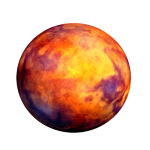
Mercury is the smallest planet in our Solar System since Pluto was downgraded to a dwarf planet, and it is also the closest to the Sun. This makes the development of life on this planet quite difficult, as there are high and low temperatures, climatic instabilities, a weak atmosphere and a dark surface, probably due to the presence of graphite or high temperatures, which "carbonize" the landscapes. Despite this, he is not the hottest (that title belongs to Venus), but the fastest around the Sun. It is possible that the ancient Romans named him after Mercury, who was the swiftest messenger god. Despite the adversities, it is an intriguing planet that draws the attention of astronomers for containing water, both in solid and liquid state (in smaller quantities).
Venus, the second planet from the Sun
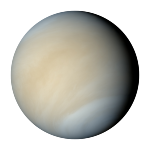
Venus, the second planet from the Sun, was named after the Roman goddess of love and beauty, Aphrodite. It is the brightest object in the night sky, exhibiting an apparent magnitude of -4.6, enough to cast shadows. In terms of size and mass, Venus is very similar to Earth, being only 650 km smaller in diameter and having a mass of 81.5% of Earth's mass. However, conditions on the Venusian surface are completely different, as it is covered by a dense atmosphere composed of 96.5% carbon dioxide and nitrogen being the largest component of the remaining 3.5%.
publicity
Acid rain is one of the consequences of air pollution

Acid rain is one of the consequences of air pollution. The carbon dioxide (CO2) existing in the atmosphere already makes rain slightly acidic, even under natural conditions. The natural pH of water is 7 and when in equilibrium with atmospheric CO2 it is 5.6, slightly acidic. Sulfur oxides (SO2 and SO3) and nitrogen oxides (N2O, NO and NO2) are the main components of acid rain. These compounds are released into the atmosphere through the burning of fossil fuels. When they react with water droplets in the atmosphere, they form sulfuric acid (H2SO4) and nitric acid (HNO3). Together, these two acids cause an increase in the acidity of rainwater. This acidification of soil and surface water has devastating effects on ecosystems and poses a serious danger to living beings.
The relief of the earth's surface (lithosphere)

The relief of the earth's surface (lithosphere) is formed by the action of natural processes, such as the movements of tectonic plates, erosion caused by water and wind, as well as earthquakes and volcanic eruptions. Plateaus, plains, geographic depressions and mountains are some of the types of relief that can be created by these processes. Plateaus are elevated, relatively flat surfaces with steep, well-defined slopes. Plains are flat surfaces, of low altitude, and formed by the deposition of sediments generally originating from higher and eroded areas. On the other hand, geographic depressions are characterized as lower areas in relation to neighboring regions, due to erosion. Finally, mountains are formed by earthquakes, volcanic eruptions, and erosion caused by water and wind.
Deserts

Deserts are extensive arid areas characterized by low rainfall and scarcity of food resources, but they are not always hot. Even so, they are not entirely devoid of fauna and flora, and some even include cities in their landscapes. The largest desert in the world is Antarctica, due to its very low temperatures, high altitudes and the fact that water evaporates more than what is replaced by the scarce rain. The word "desert" comes from the Latin "desertu", which means uninhabited, lonely or emptied, and are formed due to the lack of rain in these regions.
publicity
Volcanoes

Volcanoes are natural phenomena that form in areas where tectonic plates converge. These plates circulate over magma, the viscous part of the Earth's mantle responsible for the movement of huge rocky blocks. When the pressure and heat in the mantle build up, magma needs to be expelled to the surface. Therefore, cone-shaped cracks are opened for the magma to reach the surface and generate volcanic eruptions. The viscous and extremely hot liquid called magma, when expelled to the surface, is called lava. It is common for these rifts to occur in subduction zones, contact areas of tectonic plates. Lava, derived from magma of basaltic composition, is a set of molten rocks at extremely high temperature.
Planet Earth was formed approximately 4

Planet Earth was formed approximately 4,5 billion years ago through impacts and collisions with other stars. This collision was responsible for the formation of the Moon. Initially, the Earth was enveloped in gas and with intense volcanic activity. With the cooling process, the earth's crust was formed, allowing the presence of liquid water, and the formation of the oceans. It is the only planet in the Solar System not named after a god. It is the third closest to the Sun, the densest and the fifth largest of the eight planets in the Solar System. Its internal structure is constituted by the crust, the rocky portion; by the mantle, formed by magma; and by the core, divided into outer core and inner core. In its external portion, it presents the lithosphere, rocky sphere; the atmosphere, gaseous sphere; the hydrosphere, sphere of water; and the biosphere, sphere of life.
Planet Mars

Planet Mars is the fourth closest planet to the Sun and the second smallest in the solar system, after Mercury. Its name is a tribute to the Roman god of war, due to its reddish color resulting from the presence of iron oxide on the surface. In addition, it has two small irregularly shaped moons: Phobos and Deimos, which are named after the children of Ares (Mars) and Aphrodite (Venus) in Greek mythology. It is possible to observe Mars with the naked eye, without the aid of a telescope, and for this reason it is one of the most studied planets. Its day is approximately 24 hours and 37 minutes long, which makes it closer to Earth, although its Martian year is 687 Earth days.
publicity
Jupiter is the largest planet in the Solar System and

Jupiter is the largest planet in the Solar System and is located between Mars and Saturn, at a distance of about 779 million kilometers from the Sun. It has an atmosphere mainly composed of hydrogen and helium, and its average temperature is -110 °C. This celestial giant is visible to the naked eye, being the fourth brightest object in the sky, behind only the Sun, Moon and Venus. In addition, it has a ring system in its structure, although it is less bright and sharp than Saturn's. The Great Red Spot, an anticyclonic storm, is another striking feature of Jupiter. The planet was named after Jupiter, the god of gods on Olympus.
Saturn
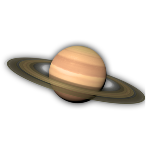
Saturn is known as: was Cronos for the Greeks (father of Zeus - Jupiter). It is located sixth from the Sun and is the second largest planet in the Solar System. Its rings are visible thanks to its extremely high albedo, unlike other gaseous planets, even with its thickness being, on average, less than 1 km. This characteristic is due to its composition, essentially formed by ice particles. It is the only planet that has a density less than water (0.69). Due to being predominantly gaseous, it is formed mostly by hydrogen and helium. Therefore, there is no solid surface. Saturn's core is made up of a dense core of rock, ice and water. This fact, associated with its high speed of rotation (a day on Saturn is equivalent to 10 Earth hours) makes it the planet with the greatest polar flattening (almost 10%).
Planet Uranus is the seventh planet from the Sun
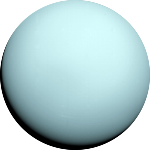
Planet Uranus is the seventh planet from the Sun, being one of the four gaseous planets in the Solar System. It has a composition of gases such as hydrogen and helium, as well as various "ices" such as water, ammonia and methane, as well as traces of hydrocarbons. It is known for its extensive series of rings that surround its surface, totaling 13. The planet also has 27 moons already identified. A peculiar feature of Uranus is its 84-year translational motion. It has the coldest atmosphere in the Solar System, with minimum temperatures of 49 K (–224 °C). Its blue color is a result of absorption of red light by methane in the upper atmosphere.
publicity
Planet Neturnus
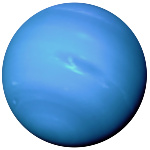
Planet Neturnus is the eighth planet from the Sun in the Solar System and the last since Pluto was reclassified as a planetary dwarf in 2006. It has a rocky core and a layer formed by water, ammonia and methane. Its atmosphere is mostly hydrogen and helium, and it takes 16 Earth hours to complete a Neptunian day. The planet has 13 confirmed moons and one awaiting scientific recognition. It is also surrounded by three notable rings: Liberty, Equality and Fraternity. Neptune's bright blue-green color is a result of the high level of methane in the atmosphere.
Mercury, Venus, Earth, Mars, Jupiter, Saturn

Mercury, Venus, Earth, Mars, Jupiter, Saturn, Uranus and Neptune are the eight planets in the Solar System, listed in order of increasing distance from the Sun. Known as primary or main planets, they all have enough mass to assume an approximately spherical shape. The planets orbit the Sun in the same direction, in a translational movement. This movement, seen from the Earth's North Pole, follows a counterclockwise direction, called direct direction. During the translation movement, each planet describes an imaginary line around the Sun, called an orbit. The orbits of the planets are: • Elliptical – that is, they are shaped like ellipses, being practically circular; • Independent – one from the other; • Coplanar – as they are all practically on the same plane.
The Sun is the only star in the Solar System

The Sun is the only star in the Solar System. The biggest and brightest of all the stars we see in the sky because it is the closest to Earth. It is a medium-sized star, which is in the middle of its stable viewing time. It has illuminated the Solar System for around five million years. It is a huge sphere of Hydrogen and Helium that produces energy and radiates it into space. The mass of the Sun is much greater than that of all other bodies in the Solar System: it corresponds to approximately 99.8% of the mass of the Solar System. It moves together with all the bodies that surround it, around the central region of the Milky Way: we say it has translational movement. As it also rotates on itself, we say that it has a rotational movement. Due to its constitution, which is not uniform, becoming less and less dense towards the surface, it has no defined limits and does not all rotate at the same speed.
publicity
Rotation of the Planets:
As they move around the Sun

Rotation of the Planets: As they move around the Sun, the planets rotate on themselves around an axis: they have a rotational movement. The time it takes for a planet to complete a complete rotation around its axis is called its rotation period. The Earth's rotation period corresponds to one day on Earth. The rotation period is different from planet to planet and it is not possible to establish a relationship between the distance of the planets from the Sun and their rotation period.
Mercury, Venus, Earth and Mars
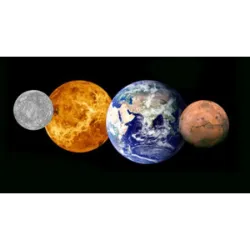
Mercury, Venus, Earth and Mars, which are closest to the Sun, are the inner planets. Because they are made up of rocks and metals, they are also called rocky, terrestrial or telluric planets. Characteristics: • They are small, rocky, with a small mass and a high surface temperature; • They describe short orbits; • It has small translation periods, with the duration of the years also being small; • They have high orbital speed; • They have large rotation periods that correspond to long days; • They have few or no moons and no rings.
Back
